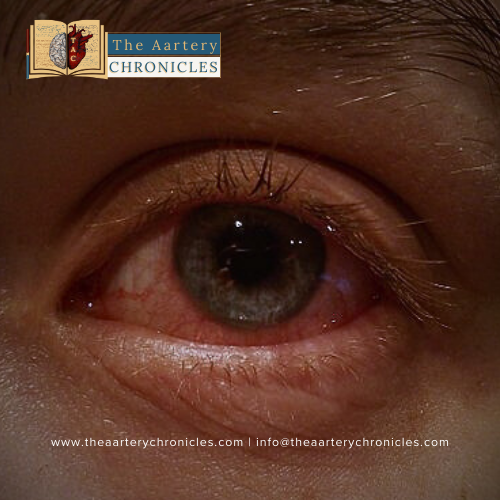Gluten-free Diet: Necessity or just a Craze?
Reading Time: 4 minutesThe gluten-free diet forces you to eat healthier unprocessed foods with fewer calories which aid in weight loss and improves overall health. – Dr. Aarti Nehra, MBBS, MMST The gluten-free diet forces you to eat healthier unprocessed foods with fewer calories which aid in weight loss and improves overall health. – Dr. Aarti Nehra Gluten-free Diet: Necessity or just a Craze? The Gluten-free diet has been promoted extensively by many celebrities across the world for weight loss. Athletes have also attested to the health benefits of a gluten-free diet. And, then comes the craze to follow your role model. The market is flooded with products that are marked Gluten free. But is it really worth following a gluten-free diet even when you don’t have any issues with Gluten in the first place? Let’s find out in this article what is gluten and why it is so popular. What is Gluten? Gluten is a protein found in cereal grains, particularly in wheat, barley, and rye. Gluten is composed of two proteins: Gliadin: It imparts cohesiveness and extensibility. Glutenin: It is responsible for maintaining elasticity and strength. This structural protein gives a stretchy quality to the dough. Gluten is used as an important binding agent in preparing specific foods and adds a nutty and tasty flavor to food. It is also used for the certain texture that it offers to the foods. Foods that contain gluten include bread, burger, pasta, pizzas, etc. Oats are naturally gluten-free, although might contain gluten through cross-contamination especially when oats are processed in a wheat facility. Gluten is available in markets in the form of wheat gluten, and seitan which is a high-protein vegan source for protein. Gluten-free alternatives for all these products are also available and labelled under the category of ‘gluten-free’. According to the FDA rules, the food items labelled ‘gluten free’, ‘no gluten’ etc., must contain less than 20 parts per million of gluten. Gluten foods include Pasta. [Image source: Pixabay] Disorders related to Gluten Wheat allergy: Immune system responds to food containing wheat protein and has an IgE-mediated reaction to the proteins. Wheat allergy usually develops during early infancy and children are believed to outgrow it by the age of 3 to 5 years. An allergy to wheat does not permanently damage the gastrointestinal (GI) system. Celiac disease: Autoimmune disorder of the small intestine, Celiac disease is seen mostly in genetically susceptible people when they consume gluten. Gluten causes damage to the villi in the small intestine leading to malabsorption of nutrients. The prevalence of celiac disease is around 1% of the worldwide population. Non-gluten sensitivity: This is a condition where consuming gluten-containing food items can cause symptoms such as bloating, gas, ataxia, fatigue, headaches, dizziness, etc. This condition is also called sensitivity to gluten, or intolerance of gluten. It is important to avoid gluten for people with disorders related to gluten or those who feel unwell from the consumption of gluten. What is a gluten-free diet and why has it become so popular? A gluten-free diet refers to a certain diet where food items containing gluten are excluded. This includes wheat and various other gluten-containing grains. Typically for gluten-free diets, emphasis is placed on eating only whole foods such as eggs, fruits, vegetables, and legumes. People have been adopting gluten-free diets even in the absence of celiac disease or disorders that are related to gluten. The gluten-free diet has become widely popular in recent years. According to the surveys, around 30% of adults have limited and avoided the intake of gluten despite not being diagnosed with any kind of gluten-related disorder. Reportedly, an enormous craze for gluten-free diets has been associated with several non-scientific claims that avoiding gluten can have immense health benefits and attributes such as weight loss and lowering the risk of developing cardiovascular disorders. Apart from this, celebrities and athletes opting for a gluten-free diet also influences the diet choices of the population. It has been found that around 27% of people have chosen gluten-free diets to aid in weight loss. 65% of adults are under the impression that gluten-free diets are healthier. Dr. Gurmeet Kaur, MD – The Green Corridor, PRISMS, Aartery A balanced diet that includes gluten-containing grains can provide essential nutrients like iron, calcium, vitamins, minerals, and fiber, which may be lacking in a gluten-free diet. For those with celiac disease or gluten sensitivity, avoiding gluten is necessary. However, individuals without such conditions should be cautious when adopting a gluten-free diet, as some gluten-free products may be higher in fats and cholesterol, potentially increasing the risk of cardiovascular issues. It’s essential to make informed choices and consult a healthcare professional for personalized dietary advice. Should Everyone go Gluten-free? Cutting back on gluten without consulting with a physician would cause one to miss out on the important nutrients that are required daily, these include fiber, calcium, iron, etc. In the case of gluten-related disorders, it makes sense to follow a gluten-free diet. In case of no abnormalities associated with gluten, evidence shows the disadvantages of choosing gluten-free diets. Gluten-free products such as cereals, pasta, and bread tend to have a low content of potassium, zinc, and iron. A gluten-free diet may lead to the risk of developing nutritional deficiencies such as iron, vitamins, and minerals. Take away Awareness is needed when choosing any kind of diet as it has an impact on overall health and well-being. For those diagnosed with gluten-related disorders, it is important to avoid gluten. However, experiments with gluten-free diets must be avoided. Cutting gluten without proper consultation from a doctor, and experimenting with diets for the sake of weight loss, with no scientific evidence supporting the claim can turn out to be extremely harmful. Author: Sanika Pande
Gluten-free Diet: Necessity or just a Craze? Read More »
Nutrition and Diet, People Forum





